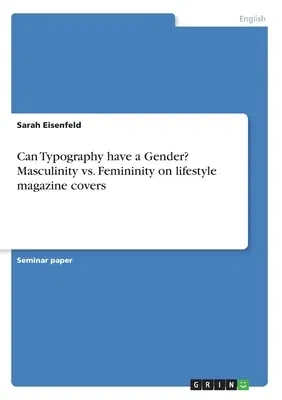Seminar paper from the year 2019 in the subject English Language and
Literature Studies - Linguistics, grade: 1,7, Free University of Berlin
(Institute for English Language and Literature), course:
Sociolinguistics and Varieties of English: Language and/ in Society,
language: English, abstract: The aim of this paper is to analyze and
describe the typography, which is employed on the lifestyle magazine
covers that seems to characterize and represent the ideologies of gender
roles. The material of the study will be two title giants, the Women's
Health and its male equivalent Men's Health. Different components of the
two cover's typography and their representation of gender will be
examined and compared. The covers will be analyzed using principles of
the typographic communication theory by Jürgen Spitzmüller and branding
to discuss the important typographic variants. Different components of
typography will be examined to see whether or not typography plays a
part in conveying gender roles, which would then have societal
implications. If the typography on the cover is the same for the Women's
Health as for the Men's Health and whether it represents gender
ideologies will be the vital question of this paper. In the course of
digital mediazation, scriptural-graphic communication has become an
everyday practice, and typography has been a fixed part of companies'
corporate identity serving as a tool within written communication.
Especially, in lifestyle magazines, the choice of typography as an
identity-building stylistic element that is not to be underestimated.
The digitization allows for more choice and control of how the
consumer's text looks. Typography produced for magazine covers exists so
that the reader can extract the meaning of the text in an efficient and
effortless manner. However, from a sociolinguistic perspective,
variations on the graphical level as well as on the social relevance of
typography, can be viewed as a neglected research topic. Usually, resea


